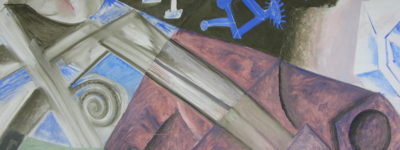Saturation and Diffraction at the LHC and the EIC

ECT* - Villa Tambosi
Strada delle Tabarelle, 286
Trento - Italy
The general scientific goal of this workshop is related to QCD at high gluon densities and diffraction at the Large Hadron Collider (LHC) and the future Electron-Ion Collider (EIC) to be built in the US at BNL.
The first topic deals with the high gluon density or saturation regime at the LHC and the EIC. The advantage of these colliders is that it is possible to collide both protons and heavy ions. The goal is first to define the best ways to probe the Balistky Fadin Kuraev Lipatov equations of QCD that describe the proton or the heavy ion structure evolution as a function of the proton/heavy ion momentum fraction carried by the interaction gluon. In addition, we want to explore strong interactions in novel conditions, characterized by high parton densities and strong collective phenomena. This new regime of QCD gives access to the non-linear structure of QCD in a weak coupling context, where controlled calculations are possible. This matter is so dense that the gluon occupation number saturates, i.e. reaches the maximal value permitted by the gluon mutual repulsion. This dense system of gluons is practically unexplored experimentally and still rather poorly known theoretically. It is clear that special conditions using for instance heavy ions and special observables are needed. The goal of the workshop will be to bring together experimentalists and theorists in order to define the best possible observables for these effects and to build the EIC detector adapted to these potential discoveries.
The second topic deals with diffractive events, namely events when protons are intact in the final state and can be measured in proton detectors. The recent discovery of the odderon by the D0 and TOTEM experiments will definitely be one of the goals of the workshop, together with the search for glueballs at the LHC. In addition, diffractive studies in a wide kinematical region will allow us to understand better the Pomeron structure in terms of quarks and gluons by studying Double Pomeron Exchange and Single Diffractive events as an example. We can quote the constraints on the Pomeron structure using W/Z or photon+jet events as an example. Special attention will also be put on the determination of survival probabilities.
Last but not least, photon exchange events are sensitive to extradimensions and axion-like particles by measuring for instance the production of diphotons at high mass, and the test of the BFKL resummations using the jet gap jet events following the recent results published by the CMS collaboration.
Gallery
Organizers
-
Christophe Royon (University of Kansas, Lawrence/US)
-
Agustin Sabio Vera (University Autonomy de Madrid, Madrid/E)
-
Soeren Schlichting (University of Bielefeld, Bielefeld/D)
-
Abhay Deshpande (Stony Brook University, Stony Brook/US)
-
Martin Hentschinski (Universidad de Las Americas Puebla, San Andrés Cholula/MX)
-
Néstor Armesto (Universidad de Santiago de Compostela, A Coruña,/E)
-
Tuomas Lappi (University of Jyväskylä, Jyväskylä/Fi)
Contacts
Registration
Registration no longer available.
Registration deadline for in-person participation: May 24, 2022
Registration deadline for remote participation: June 26, 2022
